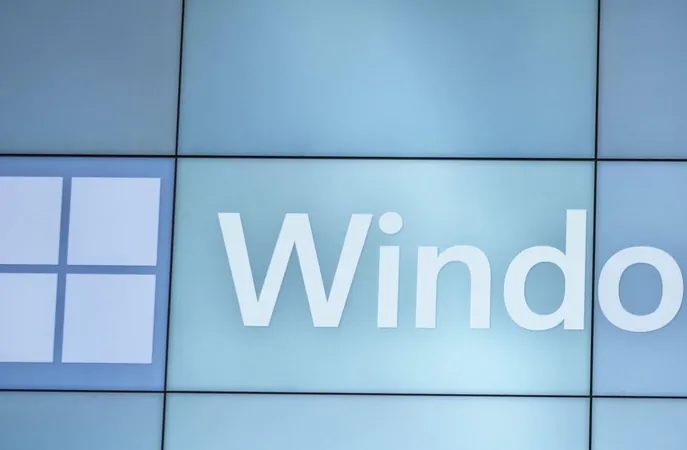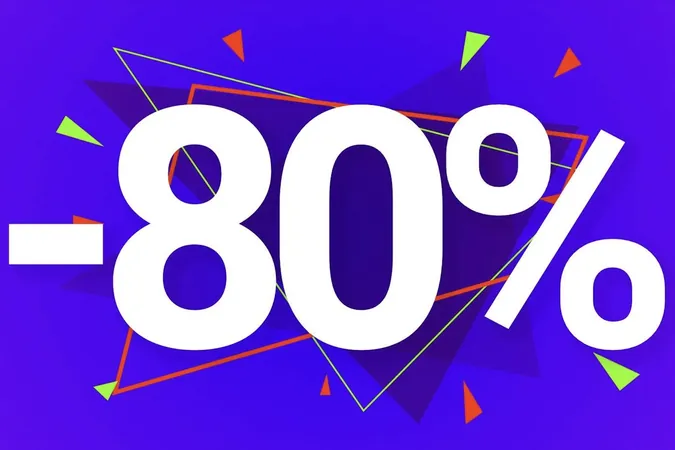
Urgent Microsoft Hacking Alert: 450 Million Windows Users Must Take Action Now!
2024-11-28
Author: Chun
Microsoft's Urgent Update Warning
In a crucial announcement this week, Microsoft warned that a staggering 450 million users of Windows need to urgently update their systems to protect their data and devices from emerging cyber threats. With the end of official support for Windows 10 looming in October 2025, these users face significant risks if they don’t take action soon.
New Vulnerabilities Uncovered
Recent reports from cybersecurity firm ESET unveiled a previously unknown vulnerability in Windows that, when combined with a related browser vulnerability, has put users' PCs at risk. Both vulnerabilities have been addressed with patches, but users must ensure that their devices are updated immediately. Those who continue to operate on unsupported versions of Windows could find themselves increasingly vulnerable to attacks.
Statistics of Windows Users
There are still approximately 850 million users on Windows 10, with around 50 million relying on even older versions. Fortunately, nearly 450 million users' machines potentially meet the necessary criteria for upgrading to Windows 11. However, a significant portion of the user base—around 400 million—needs to act promptly before support for Windows 10 ends next October, or they risk falling off the security grid.
Microsoft's Support Extension Option
In a strategic move, Microsoft has introduced a $30 one-time option for users to extend their Windows 10 support for an additional year. If leveraged by all those eligible, this could generate a revenue of $12 billion. Users may also explore various workarounds to upgrade to Windows 11, which intriguingly could involve hardware upgrades to meet newer requirements. 2025 could be a prime year for purchasing new PCs as the market adjusts.
Identified Vulnerabilities
ESET identified a significant threat involving two critical vulnerabilities. The Windows system vulnerability, tagged as CVE-2024-49039 with a CVSS score of 8.8, allows adversaries to execute arbitrary code as if they were the logged-in user. This dangerous flaw can be exploited from a simple visit to a malicious website. Coupling this with a browser vulnerability (CVE-2024-9680) that scores 9.8, attackers can break out of browser sandboxes and execute their malicious agendas even without user consent.
RomCom Cyberattack Group
The cyberattack attributed to these vulnerabilities came from a sophisticated group known as RomCom. This group, believed to be linked to Russian cyber-espionage efforts, has targeted various sectors for financial gain, including insurance and pharmaceutical industries in both the U.S. and Europe. The complex exploit leads back to a malicious website designed to install RomCom's backdoor, further highlighting the need for users to heed these warning signs.
The Consequences of Inaction
According to ESET, many of the victims are located in Europe and the Americas, with several hundred cases identified in certain countries. The sophistication of this multi-layered attack demonstrates a troubling evolution in cyber threats, underscoring the importance of proactive security measures.
Market Implications
In light of these developments, the urgency for users to upgrade or extend their support for Windows 10 cannot be overstated. Even though Microsoft has attempted to help through its support extension, analysts anticipate that the end of Windows 10 support will coincide with a rebound in PC sales in 2025, driven largely by enterprise upgrades and the end of support-induced sales, rather than consumer interest in cutting-edge technology.
User Dilemma and Market Shift
Many users may find themselves in a tricky situation, either facing the necessity of a paid support extension or risking exposure to security breaches. Meanwhile, analysts predict an uptick in global laptop sales fueled by these trends, signaling a potential market shift.
Conclusion
It’s clear that Microsoft’s ongoing efforts to encourage upgrades and patch vulnerabilities are not just about improving technology—the stakes are high, and the consequences of inaction could be dire. With 450 million Windows users facing potential threats, the time to act is now!




 Brasil (PT)
Brasil (PT)
 Canada (EN)
Canada (EN)
 Chile (ES)
Chile (ES)
 España (ES)
España (ES)
 France (FR)
France (FR)
 Hong Kong (EN)
Hong Kong (EN)
 Italia (IT)
Italia (IT)
 日本 (JA)
日本 (JA)
 Magyarország (HU)
Magyarország (HU)
 Norge (NO)
Norge (NO)
 Polska (PL)
Polska (PL)
 Schweiz (DE)
Schweiz (DE)
 Singapore (EN)
Singapore (EN)
 Sverige (SV)
Sverige (SV)
 Suomi (FI)
Suomi (FI)
 Türkiye (TR)
Türkiye (TR)